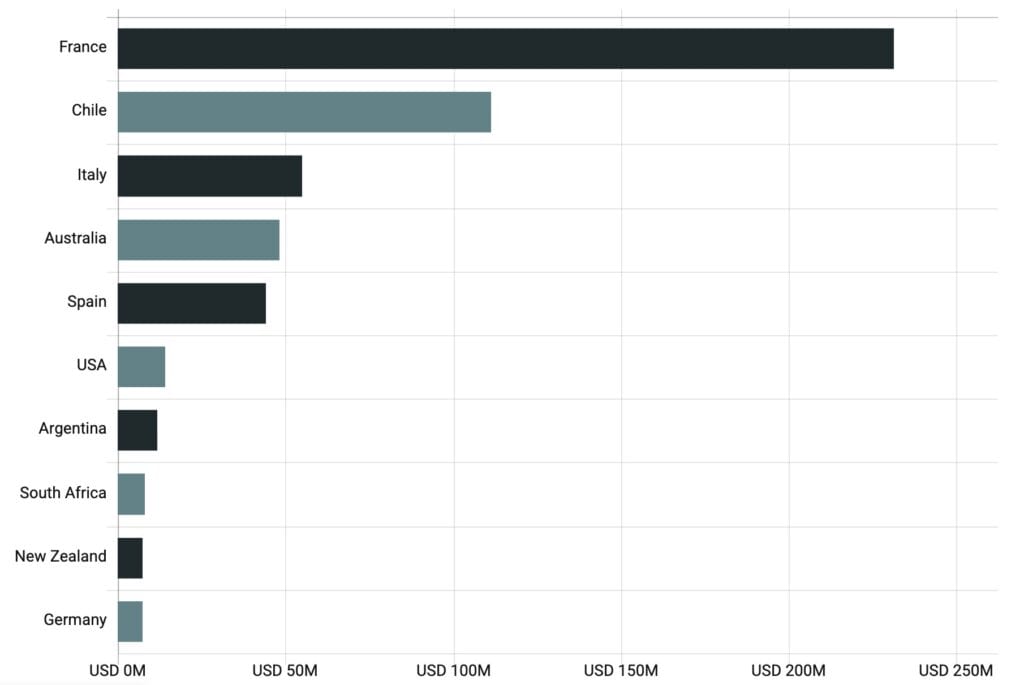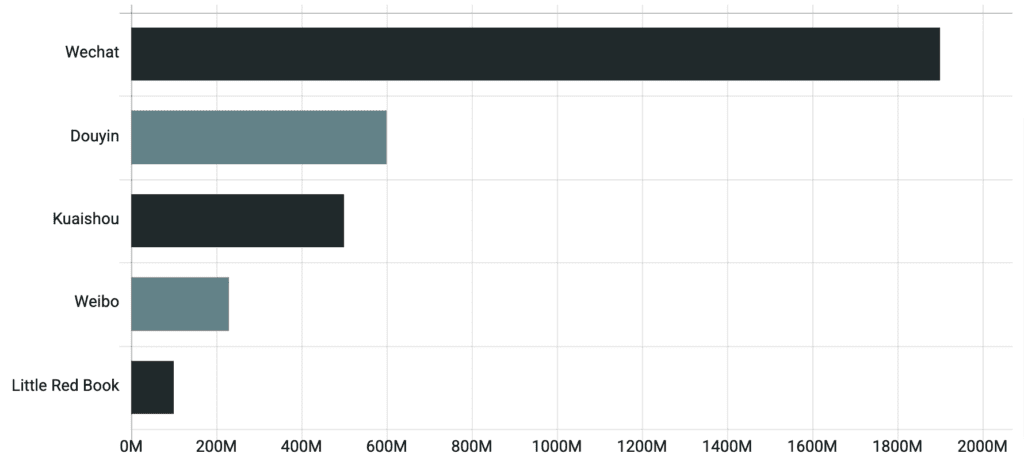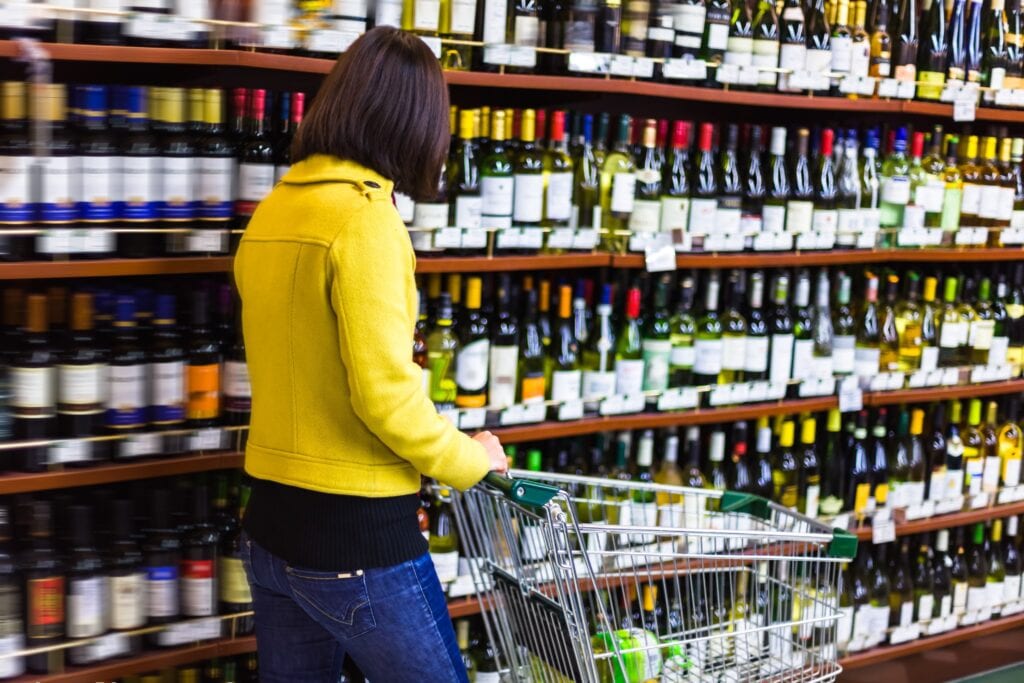While the consumption volume per capita is 40 times lower than France, China is the fifth-largest wine-consuming market worldwide by volume. Imported wines account for around 40% of the market in China. In short, with a population of 1.4 billion people, there is massive potential for wine import trade in this vast, diverse market.
With the growth of the nation’s urban middle class and an increase in wine drinking culture, the number of wine consumers in China has been increasing rapidly. Statistics suggest that the wine market in China is starting to display characteristics of a mature market. Indeed, the wine market is becoming more competitive and fragmented. This shows a marked contrast to 10 years ago when the wine sector was simply a high-profit business in China.
In spite of challenges in the Chinese wine market, new opportunities are opening up as the market matures. Against this background, if you are considering entering the Chinese market, here are 8 points you need to know before you take your first step.
1. Know Yourself
Before you enter a vast market like China, it is essential to do a SWOT analysis of your business, your products, and/or your services. Having a better understanding of what you want to achieve in this market and what you can offer Chinese consumers will help you establish clear objectives and realistic expectations.
In line with the country’s fast-paced economic growth, the wine market in China is continuously evolving. The increasing number of knowledgeable wine professionals in major cities has become a driving force in the Chinese wine industry. Before the Wine Spirit and Education Trust (WSET) suspended its operations in China in February 2021, mainland China was its second-largest market, right behind the UK, where the organization is headquartered.
The juxtaposition of niche markets with discerning consumers and diversified wine choices in major cities, and the enormous market for bulk wines monopolized by regional distributors in inland regions, make the market landscape quite unique. On the bright side, there is always a place for a diverse range of wine products, but you will hit a dead-end if you apply the same strategy in China as in other emerging markets.
Alongside traditional exporters like France, Italy, and Spain, new players are taking an increasing share of the imported wine market in China. The Free Trade Agreement opened the market to Chile and Georgia wines. However, regarded as a whole, the Chinese market is still in the developing stage.
The juxtaposition of niche markets with discerning consumers and diversified wine choices in major cities, and the enormous market for bulk wines monopolized by regional distributors in inland regions, make the market landscape quite unique. On the bright side, there is always a place for a diverse range of wine products, but you will hit a dead-end if you apply the same strategy in China as in other emerging markets.
Top ten wine-producing countries leading imports into China (Q1 + April 2021)

Source: China customs
2. Localize Your Marketing Strategy
Historically an imported commodity, wine has not yet established deep roots in Chinese culture or the daily routine of the majority of the population. Generally, there is little knowledge about wine. Therefore, it is important to build a reputation before you enter the market. Getting media coverage from wine critics, opinion leaders, or entering your products in wine competitions are good ways to prepare your brand for the Chinese market. The endorsement of Chinese media and influencers at an early stage will not be necessary; simply having a presence as an internationally recognized brand can be appealing to Chinese consumers.
Once you have dived in, make sure you have localized communication for the Chinese market.
Once you have dived in, make sure you have localized communication for the Chinese market. To eliminate the language and cultural barrier, the best way to deliver the right message is to work with someone who is deeply familiar with both. You can either work with specialized marketing agencies, or you can hire someone with the necessary experience to be your local brand ambassador.
China banned most mainstream social platforms like YouTube, Facebook, Instagram, and Pinterest. That being said, social media marketing in China is a whole new story. WeChat is the most important social network in China and the Greater Chinese area, with around 1.2 billion users recorded at the end of 2020. New platforms like Xiaohongshu (Little red book), Douyin (Tiktok), and Kuaishou have rapidly gained popularity, becoming the new favorites for influencer affiliate marketing in recent years.
There is no denying that the rapidly-changing climate in the Chinese market is bringing challenges to foreign brands. The best way to fit in is to keep up with trends, “think global, and act local”.
Chinese social channels daily active users (Q1 2021)

3. Participate in the Right but Not the “Best” Events
As a market with a growing influence in the world of wines, China has become a key destination for some of the world’s leading trade fairs, including ProWein, Vinexpo, and Vinitaly. Additionally, there are national and regional trade fairs like Chengdu Food and Drinks Fair (or known as “Tang Jiu Hui”), Topwine in Beijing, Superwine in Shanghai, Interwine in Guangzhou, Wine to Asia in Shenzhen, and smaller events held by the interprofessional association of wine regions, local governments, and specialized agencies.
Considering the relatively high cost of participating in the trade shows, as well as the logistical difficulties they present, the wise approach is to choose those that have the potential to provide the best outcome.
Before deciding which ones to attend, research trade shows and events thoroughly. Check their official website, find information about the event history, typical exhibitors and participants, and talk to exhibitors and professionals who have previously participated. The insights you gain will help you select the events that are best for building your brand and landing your target clients the most effectively and efficiently.
4. Understand Chinese Wine Consumers

The Chinese wine market has come a long way from the days of adding sodas to wines to make them more drinkable! With the rise of the urban middle class, especially in coastal regions in China, millennial wine consumers have become educated about wine and gradually incorporated wine drinking into their daily routine and social life.
With the rise of the urban middle class, especially in coastal regions in China, millennial wine consumers have become educated about wine and gradually incorporated wine drinking into their daily routine and social life.
Although the consumers of premium wines in China are relatively younger, consumers above the age of 45 remain the driving force for the consumption of fine wines. Compared with the younger generation, they have greater financial freedom and more occasions for consumption of premium wines, like during professional events for example.
In tandem with the global trend, female wine drinkers and Generation-Z are becoming more important. A report by Chinese e-commerce platform Suning in 2019 revealed the number of female wine consumers had been continuously climbing in previous years. As a result of influencer marketing in China, Generation-Z is emerging as a new group of wine consumers, with a preference for low alcohol, fruity wines with catchy labels.
5. Find the Right Importer/Representation
Importers are key players in the successful penetration of the Chinese market. Over the past 20 years, large importers have witnessed the development across the entire wine industry in China. By the year 2019, there were around 4,000 licensed wine importers in mainland China and the number is growing. Taking part in trade fairs and professional networks are the most efficient ways to meet potential importers.
In a complex market with a large geographical area like China, bad representation can be worse than no representation.
In a complex market with a large geographical area like China, bad representation can be worse than no representation. When selecting an importer in export markets, the first thing to consider is the distribution channel. As the market is highly fragmented, most importers focus on a specific geographic region. However, an importer with a strong regional presence is no guarantee for your success. A hefty first order does not ensure long-term and steady growth. Before you sign the contract, it is important to take a closer look at the importer’s portfolio and their client base to find out what kind of role your brand will be playing in their business. Last but not the least, as most Chinese consumers lack wine savvy, a knowledgeable sales team with your importer and distributor will be a valuable asset for your brand.
6. Understand the Pricing Structure in China
Pricing in the Chinese wine market is like the wild west. Due to the lack of regulation and awareness of consumers, it is not hard to find a generic Bordeaux in China being sold at dozens of times its price in France. Nevertheless, price competition for some sought-after wines is fierce. As a consequence, some smaller importers and distributors tend to sell highly recognized brands at a low or even negative margin to attract customers, while using a higher than usual markup for the wines with little price transparency to balance their overall margin.
Generally speaking, well-established importers and distributors in major cities have a decent margin of between 30% to 40%.
The Chinese government imposes three types of taxes for imported wines: tariff, excise tax, and VAT. Imported wines from countries except for the US, Australia, and the FTA countries (Chile, Georgia, and New Zealand) in China are taxed 43.15% of the CIF price after VAT adjustment (April 2019 rate). Generally speaking, well-established importers and distributors in major cities have a decent margin of between 30% to 40%. This is similar to those in mature markets. Bottled wines have more price transparency than private label bulk wines.
The end price at traditional on- and off-premise locations is quite high. E-commerce platforms, thanks to lower operational costs, offer attractive deals for Chinese consumers. As for price checking applications, Wine-Searcher and Vivino are not widely used by the mass of Chinese wine consumers. However, some retailers create QR codes for independent price checking, often using an extremely high reference price to convince their end customers that they are getting a good deal!
7. Harness E-commerce

While e-commerce remains a new channel for wine sales in most countries, it is of great importance in China. E-commerce contributes over 20% of the total wine sales in China and it is predicted to increase in the future.
Taking advantage of the country’s highly developed technology and well-established logistics network, large e-commerce platforms such as Tmall of Ali Group, Jingdong, and Suning have a wide reach of 1.4 billion consumers. With a reputation for creating online shopping festivals, Tmall introduced the “9.9 Global Wine & Spirits Festival” in 2016, which is the most important online shopping festival for wine sales. Major online wine shops, including Yesmywine, and Pinshang Fine Wine, offer a broad selection from inexpensive table wines to Bordeaux Grand Cru Classés.
While e-commerce remains a new channel for wine sales in most countries, it is of great importance in China. E-commerce contributes over 20% of the total wine sales in China and it is predicted to increase in the future.
Alongside the e-commerce giants, smaller niche online wine selling platforms are booming. Wine media platforms like Vinehoo, Tastespirit, and Wine-World have each launched e-commerce platforms over the years. Importers and distributors utilize mini-apps on social media to sell the wines directly to end customers. Unlike other distribution channels, e-commerce is easy to monitor and provides more consumer data transparency.
8. Be Prepared for the Compliance and the Uncertainty
Although China is not a highly regulated market in terms of alcohol consumption, there are some regulations that must be adhered to. Compliance is required for all the parties in export procedures by China’s General Administration of Quality Supervision-Inspection and Quarantine (AQSIQ). When you market and localize your brand, trademark and advertising law must be taken into consideration to avoid potential legal disputes. Politics is always a sensitive issue in China. As brand owners, the best thing to do is to be neutral and stay out of topics involving Taiwan, Hong Kong, Ouighour, and Tibet, all of which can easily cause a PR crisis.
When you market and localize your brand, trademark and advertising law must be taken into consideration to avoid potential legal disputes.
The uncertainty of the Chinese market is what you need to be prepared for. According to the statistics of the OIV, wine consumption in China dropped by 17.4% in 2020, while other major wine markets like the United States, the EU, the UK, and Russia remained stable despite the pandemic. Another big change in the Chinese wine market is that China imposed an anti-dumping tariff of up to 218% on Australian wines, leaving hundreds of Australian producers in uncertainty.
We hope these tips have provided a framework for approaching wine commerce expansion into China. With a clear strategy that aligns with your objectives and the realities of the Chinese wine business, your company will have a greater chance of success in this exciting and growing market.

